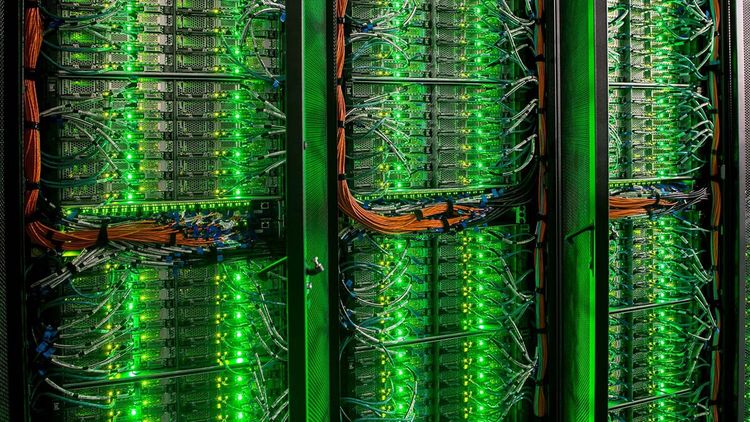CARL and EDDY have ensured excellent conditions for research at the University of Oldenburg for the past five years. Now the two high-performance computers are making way for their supercomputer successors, whose names have yet to be decided.
When CARL and EDDY went into operation in 2016 they were among the fastest computer clusters used for university research in all Germany, performing more than 457 trillion computing operations per second (457.2 TFlop/s). Now the university is acquiring two new mainframe computers to replace the duo and enhance the university's research infrastructure. "CARL and EDDY have served us faithfully for several years and we now look forward to working with their successors," said Stefan Harfst, head of Scientific Computing at the university, whose team is looking for names for the new hardware.
The two new mainframe computers will significantly boost the available computing power for complex research projects. "Many times over, in fact, thanks to the technological advances in high-performance computing," said Harfst, adding that the new clusters will be powerful enough to meet the Oldenburg researchers' constantly growing computing requirements for several years to come.
The German Research Foundation (DFG) and the state of Lower Saxony are providing 2.4 million euros in funding for one of the computers, which was applied for by Chemistry professor Thorsten Klüner and Professor of Machine Learning Jörg Lücke. Researchers from more than 50 working groups will have access to the immense computing capacity of this computer. The other computer is the result of an application by wind researcher Prof. Dr. Laura Lukassen. The Lower Saxony Ministry of Science and Culture (MWK) is providing around 1.5 million euros for this project. The funding was provided through the European Regional Development Fund as part of the reaction of the Union on the COVID-19-pandemic. An application for additional funding to expand the cluster has also been submitted to the Federal Ministry of Economic Affairs and Climate Action (BMWK).
A wide range of potential uses
"We are delighted with the new hardware. It is a major asset for our interdisciplinary work," said Klüner, who heads the Theoretical Chemistry research group, one of the many teams that will benefit from the new computing power. Klüner and his team will use the computers for the collaborative project ECatPEMFCplus, the aim of which is to increase the service life of fuel cells for hydrogen-powered vehicles.
The fuel cells used so far age quickly because rapid alternation between braking and accelerating or starting the engine at low temperatures reduce the availability of hydrogen. If a fuel cell has an insufficient supply of hydrogen, a sudden voltage reversal can occur. The group aims to prevent such reversals using a side reaction known as "oxygen evolution".
This is where the new computing power comes into play. The fuel cells used today contain a second catalyst to control this side reaction. The researchers in the ECatPEMFCplus project aim to develop a "single material system" that combines energy generation and the side reaction in a single catalyst. The resources of the new high-performance computer will be used to predict the exact functioning of these innovative catalysts.
The new computing power will also be crucial for the Machine Learning research group led by Prof. Dr. Jörg Lücke and its work with acoustic signals and microscopic images. With the new cluster, the scientists will be able to use state-of-the-art methods for data analysis and data enhancement in machine learning applications.
In cooperation with other groups working in the Collaborative Research Centre "Hearing Acoustics: Perceptive Principles, Algorithms and Applications" (HAPPAA), the researchers remove unwanted noise and interference in acoustic data. Another project called SPAplus will use the computing power to display details of microscopic images that would otherwise remain hidden in the often very blurred original images. Examples here include images of coronaviruses infecting a cell, or of lung tissue for medical research.
High-performance computing for wind energy research
The second computer will be used exclusively by ForWind, the joint centre for wind energy research of the Universities of Oldenburg, Hannover and Bremen. Along with open-field measurements and laboratory experiments, numerical simulations are a central pillar of current research aimed at gaining a thorough understanding of turbulent wind conditions and their interaction with wind energy systems.
The scientists will use the new supercomputer to combine different modelling and simulation methods in order to describe the physical properties of wind currents with even greater precision – in both individual wind turbines and entire wind farms. "The latest-generation supercomputers allow us to combine the complex simulations in wind energy research with artificial intelligence methods," says Prof. Dr. Laura Lukassen, Junior Professor for Numerical Fluid Dynamics with a Special Focus on Wind Physics. The overall objective of the project is to promote advances in the design of wind turbines and their digital monitoring during operation.


